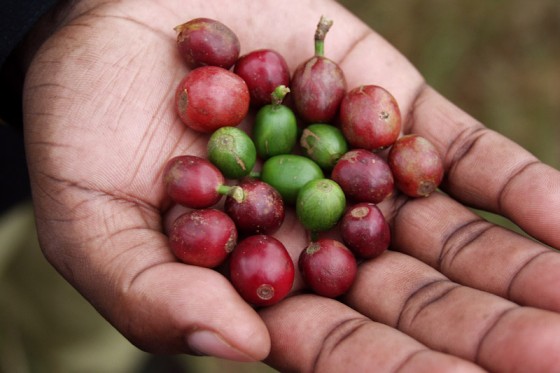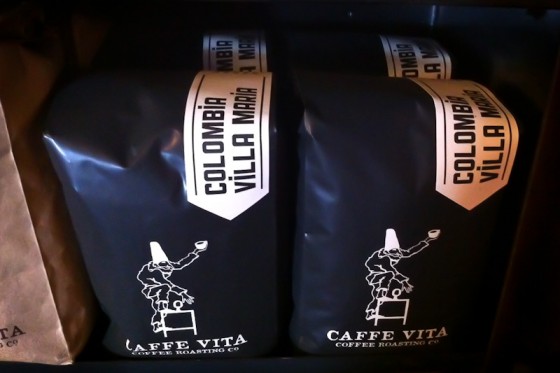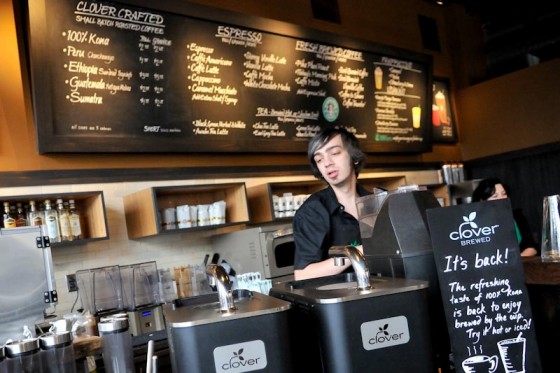After a century as a flagship industry, Colombian coffee growers have fallen on hard times, driven by free trade agreements, the global financial crisis and changing tastes for our morning cup.
Twenty-six-year-old Victor Correa works on a small family farm in the heart of central Colombia’s coffee growing region, alongside his mother and five brothers. They grow the kind of high-quality Arabica beans that end up in Starbucks’ blends and small, boutique, espresso bars in Seattle.
When Correa and his family go to sell their harvest these days, they bring it to National Federation of Coffee Growers (FNC), and find a willing international buyer.
The FNC, which controls Colombia’s export quality, pays the family a fixed $200 for each sack.
The trouble is that each sack costs $350 to produce.
That — in essence — is why Colombian coffee growers are back on strike this month. For most growers, costs outstrip revenues by 30-40%, says Correa.
“We might have one good year out of every four or five years when our revenues cover our costs,” Correa says.
The international price of Arabica coffee plummeted faster than any other major commodity in the last year. On August 1st, Arabica futures in New York bottomed out at $1.1535 a pound, the lowest price since 2009.
“Ever since the global financial crisis, the international demand just hasn’t been there,” says Juan Jose Perfetti, a researcher at Fedesarrollo, an economic and social policy think tank in Bogota.
On top of that, Colombia’s coffee growers’ volume of sales shrank in 2012 due to leaf rust disease, a nasty infection that has wreaked havoc on crops.
This perfect storm of hardships for coffee farmers prompted wave of strikes in rural coffee-producing regions starting in February, when farmers blocked roads and protested for a month.
 Protesters in Colombia march on Bogota’s central plaza, demanding the government to change its economic policies, which coffee farmers say are hurting their wallets. (Photo by Wesley Tomaselli)
Protesters in Colombia march on Bogota’s central plaza, demanding the government to change its economic policies, which coffee farmers say are hurting their wallets. (Photo by Wesley Tomaselli)
After negotiations with President Juan Manuel Santos’ government, a rescue fund was set up in March. The government allocated roughly $443 million to support the coffee farmers income fall-out.
But people like Correa are still worried about the future. This week coffee farmers joined a new wave of strikes by farmers, truckers and miners across Colombia upset by new free trade agreements with the U.S. and E.U. that they say are destroying the country’s agricultural sector.
The problems facing coffee growers are a troublesome sign for a country that built its economy around coffee, which has been Colombia’s number one export crop since the 1860’s.
In the 1960s and 1970s, Colombia enjoyed a coffee boom. Prices were high and stable. Colombian coffee’s international brand was strong (think Juan Valdez and his trusty mule). Poor farmers got richer as big plantations were replaced by small farms like Correa’s.
“The development of the country during a lot of those decades was lead by the coffee industry,” says Perfetti. “It helped construct Colombia’s middle class in many regions of the country.”
The main drivers behind the expansion were the FNC, which nurtured small growers with credit and technical assistance, and the International Coffee Agreement (ICA), a global pact between coffee producing and consuming countries that set a target price for coffee and allocated a quota for exports from each country.
“Then,” says Perfetti, “the pact broke down.”
 Cherries from a Coffee arabica plant, before the seeds are removed, dried and roasted. (Photo by Rodrigo via Flickr)
Cherries from a Coffee arabica plant, before the seeds are removed, dried and roasted. (Photo by Rodrigo via Flickr)
By 1989 Starbucks stores were popping up around the U.S., representing a shift in consumer demand toward milder, higher quality Arabica beans like the ones grown in Colombia.
This shift upset the pact between import-oriented countries and export-oriented countries. It fell apart, and the price stability the Colombian producers depended on disappeared.
Perfetti says that as countries like Brazil and newcomer Vietnam flooded the market with low quality Robusta coffee, Colombian farmers became trapped in an economy that fed a high quality Arabica coffee brand abroad.
The Federation of Coffee Growers’ strict quality standards are still oriented toward high-quality export markets, but as international prices for Arabica have slid, the numbers just don’t add up.
Even though fewer buyers are demanding Arabica coffee these days, growers like Correa’s family have no choice but to keep up with the high quality, low-yield beans.
“The federation regulates the export quality,” Perfetti says. “So when you sell abroad, you get a low price. But if you sell on the secondary [national] market, you get a really, really low price.”
Growers like Correa feel trapped.
They say it has been next to impossible for some 500,000 small growers to access the subsidies provided by the rescue fund.
But there is hope for small growers that do manage to weather the current storm — a whole new kind of buyers outside the FNC.
 Small local coffee roasters like Cafe Vita are a growing market for Colombian coffee from high-quality growers in branded regions. (Photo by Alex Stonehill)
Small local coffee roasters like Cafe Vita are a growing market for Colombian coffee from high-quality growers in branded regions. (Photo by Alex Stonehill)
Starbucks, which incidentally announced plans yesterday to open 50 stores across Colombia, is a big buyer of Colombian Arabica. The company is just one example of a private business that has provided alternatives for Colombia’s growers.
Colombia is one of Starbucks’ three biggest suppliers of Arabica for the U.S. market.
And the new Starbucks stores mean more domestic demand for Colombia’s farmers and their Arabica, which has long been undercut by cheap imports of Robusta from neighboring countries. One hundred percent of the beans at the new Starbucks locations would be sourced from and roasted in Colombia, Starbucks President Howard Schultz said in a recent interview in Bogota.
And Starbucks promotes the sort of development programs that the FNC has struggled to put in place. Starbucks Coffee and Farmer Equity (C.A.F.E.) program set up its own set of standards that go beyond quality in the cup. C.A.F.E. thinks about social and economic standards for its growers too.
Perfetti, for one, believes there are still opportunities for Colombia’s fragile coffee business. “Colombian coffee has always been a national brand,” he says. But Colombia is regionally diverse.
“Now, what we might see in the future is more regional branding.”
Virmax Café, a Bogota-based merchant that connects small, high-quality growers to small, boutique cafes, runs a company that is doing just that. More than 50% of Virmax’ buyers are in the U.S. Most of them buy for quality.
Alejandro Cadena, President of Virmax Café, says he has been rather untouched by Arabica’s price slump and the country’s economic malaise.
The income plight that has put pressure on Correa’s family hasn’t affected his company, he says.
So it seems there’s a fragile come back in the works. But in the short term, Correa wants to see more regulations that help small farmers in Colombia — that’s what the current protests are all about.
Even after the government tweaked the fund that gets subsidies to farmers, Correa says it still isn’t enough. He says that many small farmers are still waiting to get the subsidies they were promised back in March.
“To be honest, my family has received every cent the government has promised,” says Correa. “But there are still about 200,000 small farmers that have not.”



1 Comment
Comments are closed.